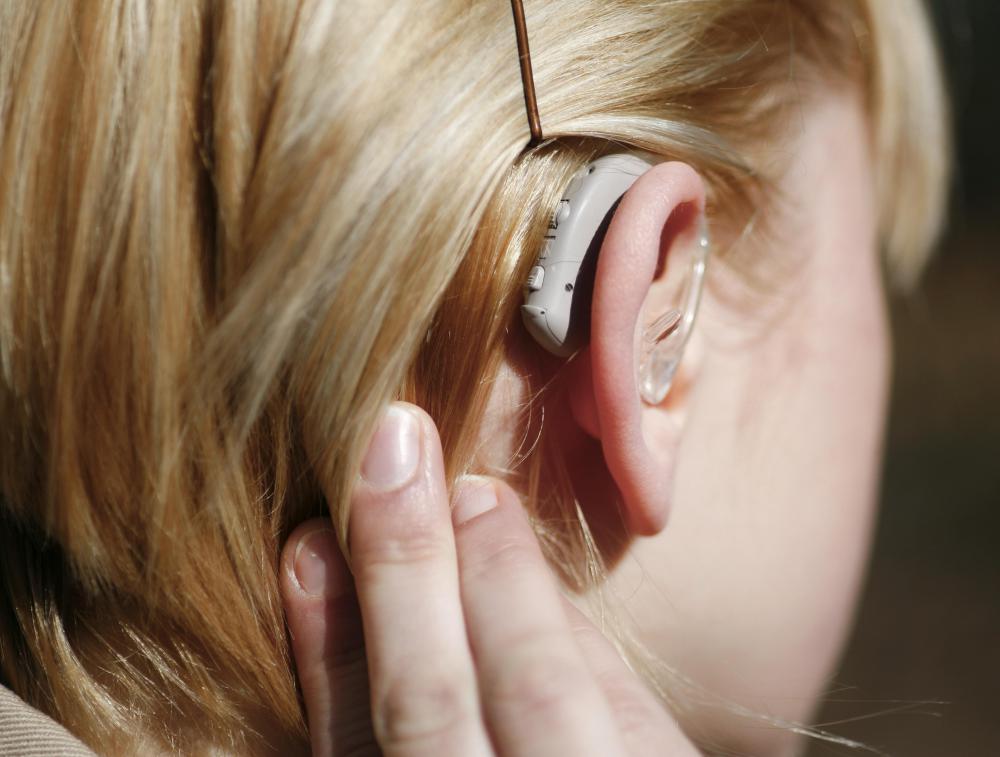At WiseGEEK, we're committed to delivering accurate, trustworthy information. Our expert-authored content is rigorously fact-checked and sourced from credible authorities. Discover how we uphold the highest standards in providing you with reliable knowledge.
What Are the Different Types of Hearing Assistive Technology?
Hearing assistive technology devices are designed to assist the deaf and those who are hearing impaired participate in normal, everyday communications. For instance, specialized devices such as frequency modulation systems or induction loop systems are typically used in conjunction with hearing aids to reverse the negative effects of background noise and poor acoustics, factors that can make it extremely difficult for a person to hear properly. There also are hearing assistive technology devices used to alert someone with hearing loss to danger, such as smoke alarms with flashing lights or vibrating devices connected to alarms — these types of systems can also be used to alert someone of a ringing telephone. Closed-captioning technology and teletype devices are common as well.
The hearing impaired often find it hard to hear in places where there are large groups of people, including live theaters, conference rooms, classrooms, lecture halls or churches. Listening devices use personal frequency modulation, also known as FM, systems that transfer the sound from a microphone directly into an FM receiver. The sound waves are then transmitted into the hearing aid inside the user's ear. In other group situations, induction loop systems are a type of assistive technology in which the microphone of the speaker is hooked up to an induction wire. When the user switches the hearing aid to its telephone setting, the telecoil that is located inside the hearing aid connects with the signal inside the microphone, and the user can adjust the volume of the hearing aid based on how loud the speaker is talking.

While people with normal hearing rely on audible alert technology, such as smoke alarms or ringing telephones, those with hearing loss cannot benefit from these systems. Instead, companies have produced hearing assistive technology based on vibrations and flashing lights. Many of these devices are used wirelessly in conjunction with a universal receiver that the individual carries with him at all times, puts underneath his pillow or sets on his bed. Depending on the type of device, some receivers allow the user to program a certain pattern of lights or vibrations for each alert. Devices are available for doorway mats, alarm clocks, doorbells, telephones, smoke alarms, motion sensors and baby monitors as well as weather and emergency alerts.

Captioning, the display of text on a screen that coincides directly with the words that are spoken, is another type of hearing assistive technology. Closed captioning technology is commonly included on televisions, and most TV shows are produced to work in conjunction with it. Additionally, most movies that have been released on digital video disc (DVD) having a language settings menu and include captioning within their subtitle options.
Teletype, or TTY, devices allow users to text conversations over phone lines. This type of assistive hearing technology allows the user to speak or type conversations into the device. Many government agencies and businesses have separate TTY lines for the hearing impaired, and hotels across the country use these devices to ensure that their rooms are accessible to the deaf or hard-of-hearing guests.
AS FEATURED ON:
AS FEATURED ON:












Discuss this Article
Post your comments